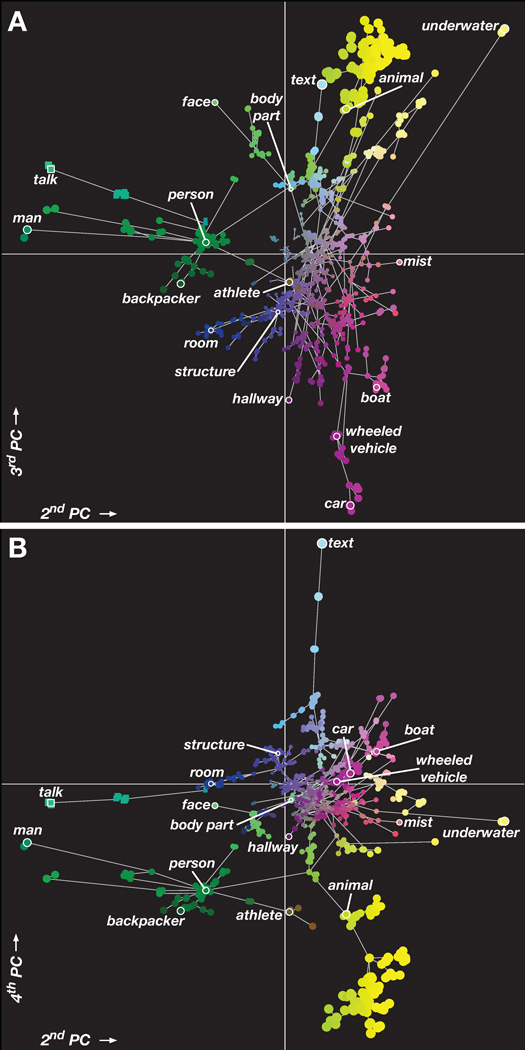Figure 5.
Spatial visualization of the group semantic space. (A) All 1705 categories, organized by their coefficients on the second and third PCs. Links indicate is a relationships (e.g. an athlete is a person) from the WordNet graph; some relationships used in the model have been omitted for clarity. Each marker represents a single noun (circle) or verb (square). The color of each marker is determined by an RGB colormap based on the category coefficients in PCs 2–4 (see Fig. 4B for details). The position of each marker is also determined by the PC coefficients: position on the x axis is determined by the coefficient on the second PC and position on the y-axis is determined by the coefficient on the third PC. This ensures that categories that are represented similarly in the brain appear near each other. The area of each marker indicates the magnitude of the PC coefficients for that category; more important or strongly represented categories have larger coefficients. The categories man, talk, text, underwater, and car have the largest coefficients on these PCs. (B) All 1705 categories, organized by their coefficients on the second and fourth PCs. Format same as panel A. The large group of animal categories has large PC coefficients, and is mainly distinguished by the fourth PC. Human categories appear to span a continuum. The category person is very close to indoor categories such as room on the second and third PCs, but different on the fourth. The category athlete is close to vehicle categories on the second and third PCs, but is also close to animal on the fourth PC. These semantically-related categories are represented similarly in the brain, supporting the hypothesis of a smooth semantic space. However, these results also show that some categories (e.g. talk, man, text, and car) appear to be more important than others. A movie showing this semantic space in 3D is included in Supplemental Materials.

